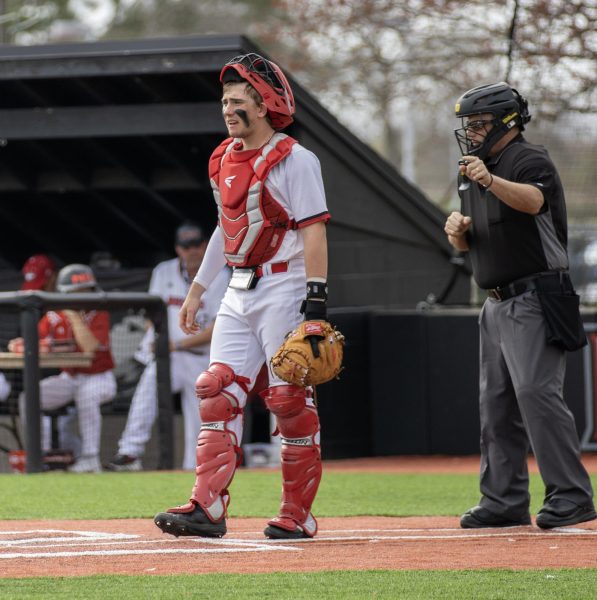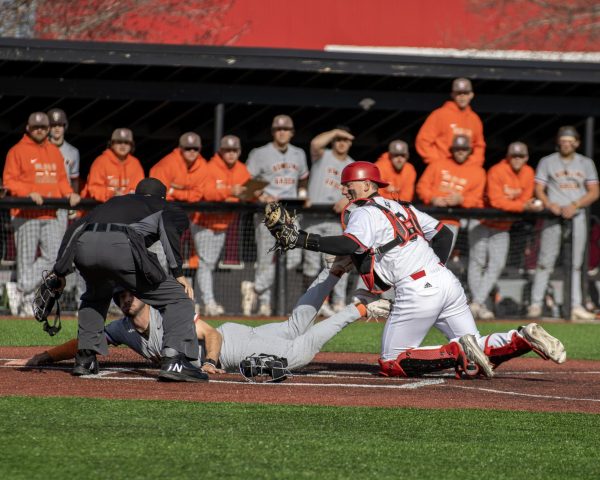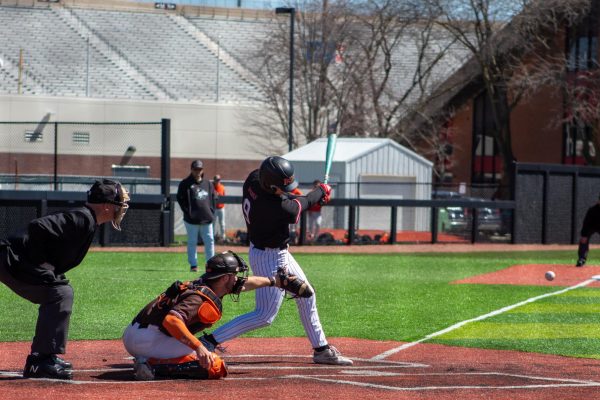Got wood?
April 12, 2005
It couldn’t have happened. There was no way Mike Santoro’s eyes were actually seeing this. There, on the mound, lay his teammate in a large heap – body completely motionless, a welt quickly swelling over his left temple. Santoro would say later that there was no chance for Mark Badgley to get out of the way. The line drive off of Bradley player Ryan Curry’s aluminum bat got to his teammate just way too fast.aluminum bat got to his teammate way too fast.
It was an unavoidable scene. One way or another that ball was going to hit Badgley. Or was it? What if the whole situation was avoidable if the batter had just picked up a wooden bat?
Sure, hitting a ball with an aluminum baseball bat is fun. Heck, an aluminum bat turns Melvin the bat boy into Mark McGwire (minus the steroids). But, simply put, with how strong college players have become, aluminum has no place in the game.
It’s a simple fact if you look around college baseball today and compare it to what you would have seen 20 years ago, there is one undeniable change: today’s players are huge. Most modern-day sluggers are built like Greek gods. Even lead-off hitters can turn on a ball and send it on a 400-foot flight. Plus they are only going to get bigger with more serious weight training regiments.
All this should mean that the need for aluminum bats is coming to an end. But it’s not. Aluminum bats were originally made back in the 1970s to hit a ball farther and make the game more interesting. But players today do that on their own.
Aluminum bats only turn a 375-foot home run into a 425-foot homer.
But scenes like the one that unfolded at O’Brien Field on March 30 continue to haunt coaches, players and parents across the United States.
But Badgley survived.
The situation could have been worse. It could have been like that of Brandon Patch. Brandon’s parents are left with wondering “what if?” What if the last batter Patch was facing was holding a wooden bat? Maybe he would still be alive.
Patch, 18, was pitching for the Miles City Mavericks in Montana in 2003 when a ball off an aluminum bat struck him in the head. The last thing Patch told his father, Duane, was that he had a migraine. A few hours later, Patch was pronounced dead at a local hospital.
Patch wasn’t the first to die from a batted ball. Since 1991, 17 pitchers, including Patch, have died on the mound. Of them, 15 came with an aluminum bat at the plate.
And it’s surprising the number isn’t higher.
In 1998, Bill Thurston, a member of the American Baseball Coaches Association, in conjunction with NCAA Division I Baseball, released a study of how many pitchers were hit by batted balls.
With only 29-percent responding to the study, Thurston reported that an estimated 373 pitchers were hit by batted balls. In 1999 the number was even higher. Since 2000 no report has been released.
That adds up to a lot of reasons to get aluminum bats out of batter’s hands.
Imagine if Curry had picked up a wooden bat instead of an aluminum one. That ball coming toward Badgley would have been moving eight to 10 percent slower, studies show. Badgley would have had more time – an extra split second maybe – to move and simply allow a single.
Instead, two weeks later, the right-hander still has massive bruising on the left side of his face and a fractured skull.
All for the sake of a little distance.













